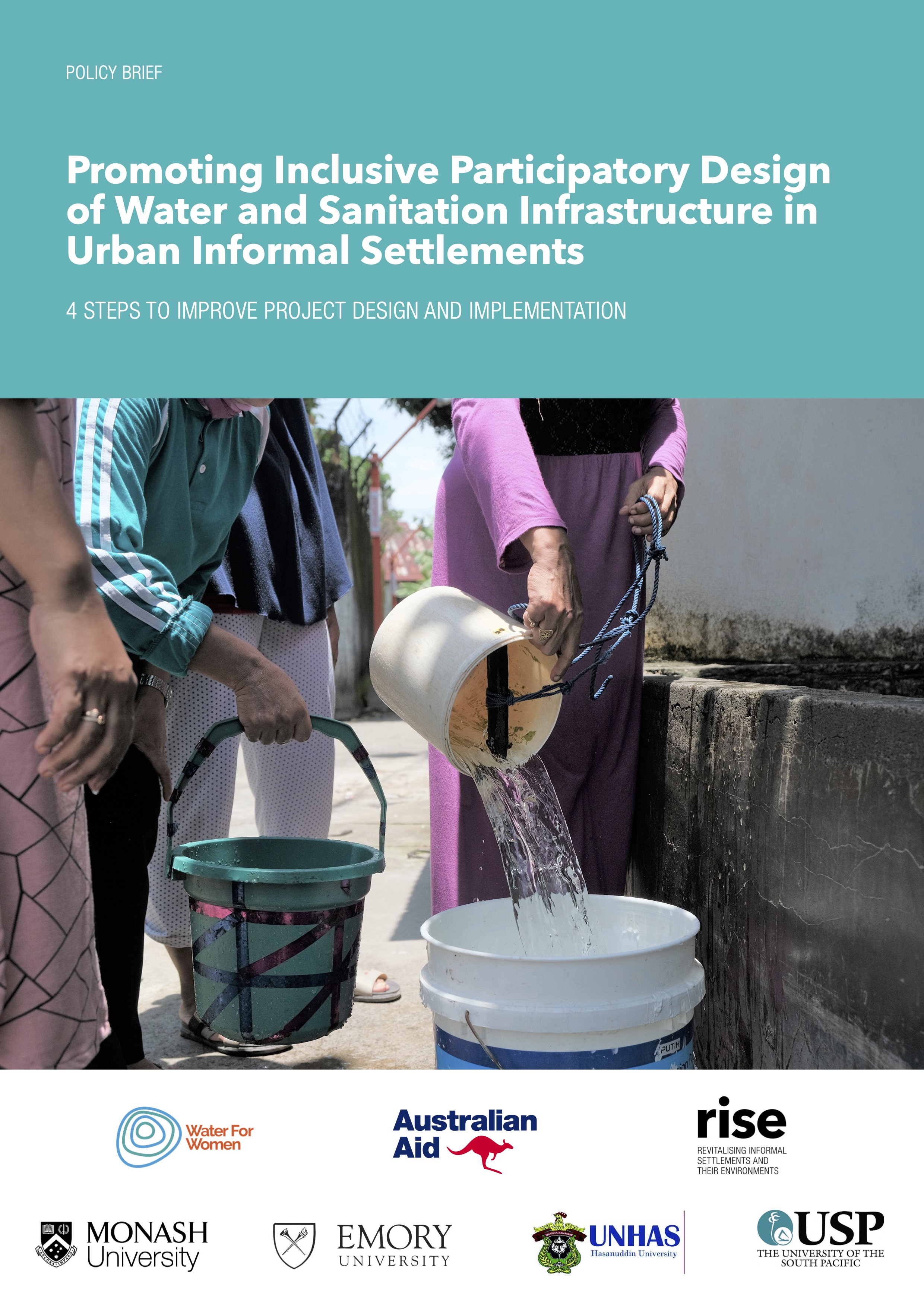This toolkit aims to stimulate an increase in quality, inclusiveness, and sustainability in water and sanitation infrastructure projects in urban informal contexts.
Such projects need to be more participatory, codesigned with participants with diverse knowledge and lived experience. They also need to be more inclusive,
following the principles of LEAVE NO ONE BEHIND and DO NO HARM. These things are hard to do, hence a toolkit to
help.
Rather than offering a set of step-by-step instructions, it presents a series of questions to help practitioners develop a reflective practice about the socio-cultural dimension of water and sanitation infrastructure planning. These questions are connected to practical examples of lessons learned in the RISE Program and to existing high-quality guidelines, toolkits and other resources on gender and socially inclusive processes, participatory design, and water-sensitive approaches to city development.
Complementing the toolkit, we have also developed a policy brief specifically for donors, funders, governments and policy-makers to enable them to commission participatory design of water and sanitation infrastructure, in an inclusive way:
Promoting Inclusive Participatory Design of Water and Sanitation Infrastructure in Urban Informal Settlements:
4 steps to improve project design and implementation
![]()
![]()
The toolkit is a starting point for practitioners as they plan and implement a participatory approach in designing water and sanitation infrastructure projects. It is positioned at the intersection of participatory design, gender and social inclusion, water and sanitation infrastructure and urban informal settlements.
Rather than offering a set of step-by-step instructions, it presents a series of questions to help practitioners develop a reflective practice about the socio-cultural dimension of water and sanitation infrastructure planning. These questions are connected to practical examples of lessons learned in the RISE Program and to existing high-quality guidelines, toolkits and other resources on gender and socially inclusive processes, participatory design, and water-sensitive approaches to city development.
Complementing the toolkit, we have also developed a policy brief specifically for donors, funders, governments and policy-makers to enable them to commission participatory design of water and sanitation infrastructure, in an inclusive way:
Promoting Inclusive Participatory Design of Water and Sanitation Infrastructure in Urban Informal Settlements:
4 steps to improve project design and implementation


VIDEO
Why is reflective practice important in this work?
VIDEO
Why is gender and social inclusion so important to WASH?
VIDEO
Why is participatory design so important in WASH?
You can use this toolkit for different purposes, depending upon your role and knowledge:




